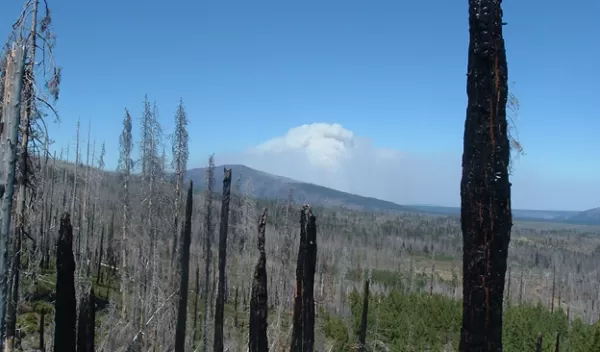
New models predict fewer lightning-caused ignitions, but larger wildfires by mid-century
Human-caused wildfire ignitions in Central Oregon are expected to remain steady over the next four decades and lightning-caused ignitions are expected to decline, but the average size of a blaze from either cause is expected to increase, Oregon State University modeling suggests.
U.S. National Science Foundation-funded scientists including Meg Krawchuk of the OSU College of Forestry and former OSU research associate Ana Barros, now of the Washington Department of Natural Resources, say the findings can help local decision-makers understand how a changing climate might affect natural and human-caused fire regimes differently, and inform fire staffing, preparedness, prevention and restrictions.
"The significance of these results lies in what we can collectively do about it as a society and in our individual actions," Barros said. "For lightning-ignited fires, depending on where and when they happen, it can be an opportunity. Where safe for firefighters, communities and valued resources, we can use these ignitions to accomplish important forest restoration work."
Findings of the study, which involved 3.3 million hectares on the east slope of the Cascade Range, were published in Environmental Research Letters.
"In the United States, two-thirds of the area burned by wildfires is from fires started by lightning, but human-caused blazes make fire seasons longer and result in fires reaching areas where they wouldn't naturally occur," said Krawchuk, a fire ecologist. "People are the primary cause of large fires in both the eastern and western U.S., and while climate is the primary driver of how much area burns, the human footprint is a close second."
Wildfire is casting an increasingly large shadow globally, including in the American West, as climate continues to become warmer and drier. Eight of the 10 largest California wildfires on record have occurred in the last seven years, and in 2020, multiple huge fires tore through the west side of the Cascade Range in Oregon, consuming more than 1 million acres.
